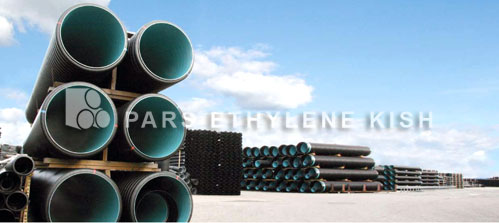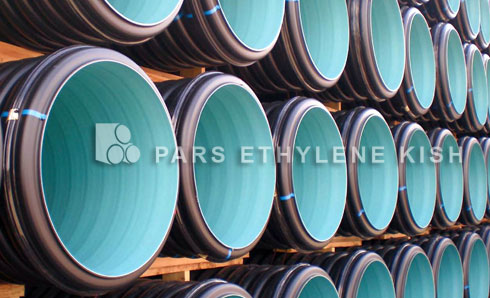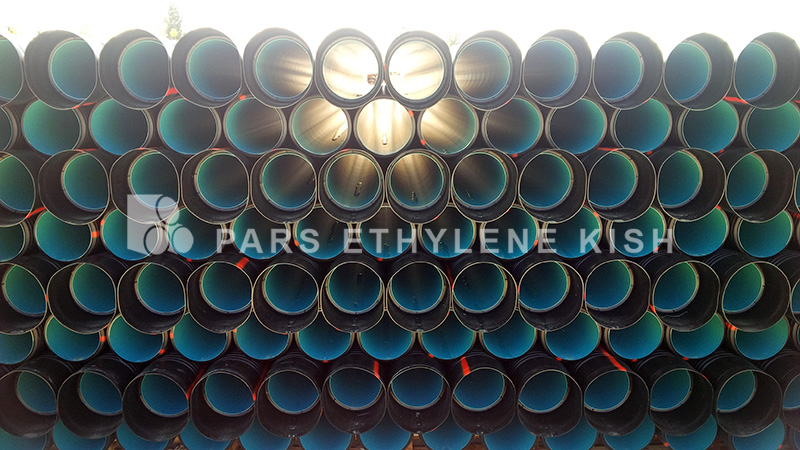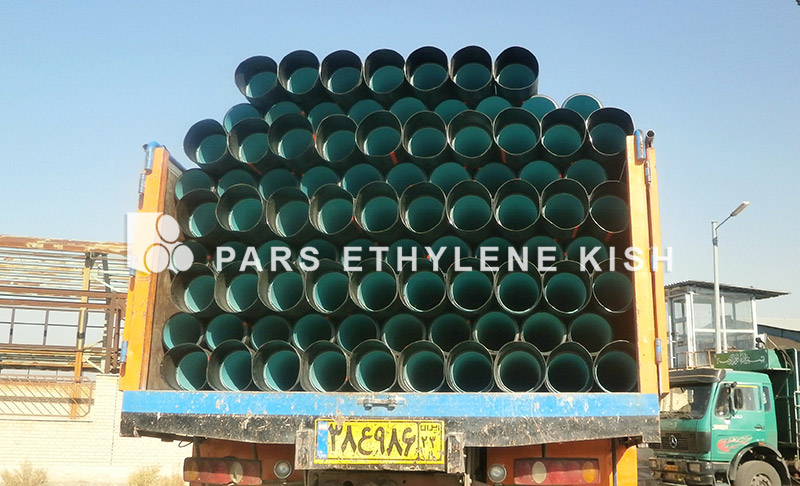
Guide on storage, maintenance and transportation of double-wall corrugated polyethylene pipes
Storage and maintenance of polyethylene pipes
This guide contains important tips for transporting, storing and installing double-wall pipes. Although this guide has been adopted from existing standards, it is only for guidance and does not replace the standards for pipe installation. The information and application of standards are required for the use of these pipes, and the information provided in this guide is only general information that is very common for experts in this field.
Note: The following guide is generally applicable to all types of polyethylene pipes, but is more commonly used for double-wall corrugated polypropylene pipes. See the link below for Guide on Transportation and Storage of Single-Wall Corrugated Pipes.
- Maintenance, storage and handling of single-wall polyethylene pipes
Transportation of double-wall pipe to the workshop
Double-wall corrugated pipes and their components should be loaded and transported

with suitable trucks and implements, so that no point pressure is exerted on the pipe and breakage, perforation, or deformation of the pipe is not formed in the pressure points. If there are sharp points on the vehicles, they should be covered by suitable materials such as long boards. Make sure that bolts and nails are not stuck in the wall and flat bed of the truck and that their weight is not loaded on the edge of the truck and the edges of the pipes. Otherwise there is a possibility of serious damage to the pipes. Do not use uncoated metal cables or other hard objects to lift double-wall corrugated pipes. It is advisable to use two fabric bands between the two ends of the pipe or use a fabric band in the middle of the pipe. Use hands to control and direct pipes so that they do not collide around. Never use a belt to lift multiple pipes at the same time. Pipes are lightweight because of their specific structure and lightweight materials so that lower sizes are easy to move by one or two workers. Care must be taken that pipes are not rolled in the workshop or thrown down. Otherwise, serious damage will occur.
Storage and maintenance of double-wall corrugated pipe
The storage location of double-wall corrugated pipes depends on the type of land and the type of equipment available. Generally, the land used for storage should be flat. The ground can be artificial or covered with asphalt, sand or grass. Note that pipes are made of high-density polyethylene, and the presence of sharp stones underneath the pipes will cause a hole or deformation of the pipes at that point. In addition, the deposition of pipes in rugged areas will cause deformation of pipes in different points. It is advisable to put three plastic pallets under the pipes and avoid direct contact between pipes and the ground.

Size: Never place lower size pipes in larger size pipes in the deposition area, because it raises the weight and pressure on the lower pipes, which will make them deformed.
Double-wall pipe arrangement: Pipes are arranged in zigzag so that couplings are not deformed.
Height: The permissible height for assembling pipes in the workshop conditions is up to two meters for lower sizes. For sizes larger than 500 mm, the upper pipes should be placed on wooden sheets, in which the maximum allowable height is 2.5 meters. Pipes of a length of six meters should be placed on three wooden sheets and pipes less than four meters should be placed on two wooden sheets. In these conditions, the sheets are placed with equal distances between the two ends of the pipe. Note that manhole pipes should not be placed on each other.
Sunlight: All Pars Ethylene Kish products have ultraviolet stabilizers, yet sewage pipes are produced for underground applications. It is therefore better to not keep sewage pipes in open air for more than a year. They shall be placed under a canopy to be kept away from direct sunlight. In general, it is best to keep pipes in roofed space to protect them against sunlight, and if kept them in open space, pipes should be covered with anti-UV covers, and it is best to have the pipes vertically in front of the light.
Temperature: All plastics are subject to change in dimensions due to temperature rise. If temperature is more than 25 ° C, pipes will change in size. Therefore, in cases where air temperature is more than 25 ° C or the storage time is longer than 24 hours, there is a need for additional care in the storage and keeping the pipes in better conditions than the maximum allowed standards.
Deformation: Care must be taken that excessive temperature and long-term storage of pipes in non-standard conditions might cause deformation in the dimensions of pipes, especially larger size pipes. If these conditions occur and the pipe is deformed, the inside diameter of the pipe must be measured in the horizontal and vertical directions, and if the diameter in a horizontal direction is more than the vertical direction, the pipe must be rotated 90 ° for the larger diameter be placed in the vertical direction. Care must be taken that this should be done at least six hours before the installation of the pipe in the trench. It is better to store manholes in a position resembling their installation in the trench, so that they will not be affected later due to their specific and asymmetric shape.
Tips on installing double-wall corrugated pipes
Laying into the trench: In laying pipes in the trench, it is necessary to

transfer them using appropriate equipment into the trench and refrain from throwing pipes into the trench. Make sure the pipe does not fall on the edge when carrying inside the trench, because the weight of the pipe causes deformation at the edge and makes it difficult to connect the pipes.
Floatation: Because the weight of polyethylene is lighter than water and also the profiles of double-wall pipes are empty, the pipes will float when there is water in the trench. Therefore, pipes should be restrained using appropriate tools above and at the crown.
Temperature difference: Under workshop conditions, some pipes may be inside the trench or in the shadow, and some of them might be under the sun. These changes will sometimes result in a temperature difference of more than 20 to 30 ° C. Therefore, care must be taken that pipes are maintained in similar conditions so that they are completely temperature-proof when installed. Otherwise, after installation, over time pipes will leak from the fitting or installing the fittings will be difficult.
Standards and regulations
This guide only mentions the most important and necessary points in the various standards and includes only a small part of them. Therefore, the study of the principle of these standards is recommended (Handbook of Corrugated Pipes).
Note: The above guide is generally applicable to all types of polyethylene pipes, but is most commonly used for double-walled polyethylene pipes. Refer to the link below to guide on transportation and storage of single-wall pipes.
Maintenance, storage and handling of single-wall polyethylene pipes




